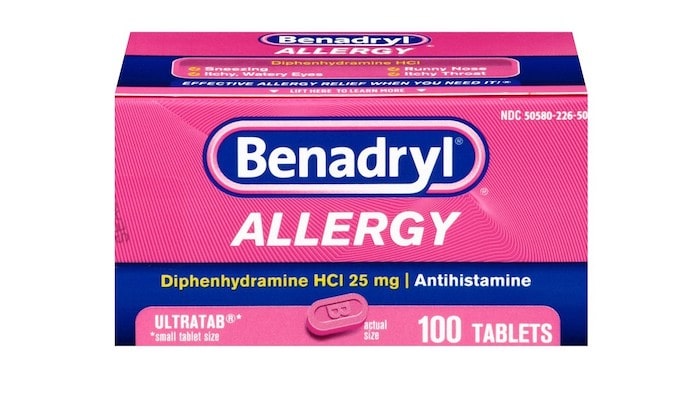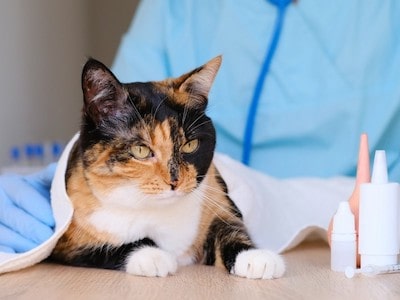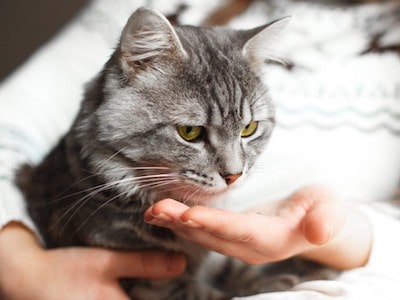As cat owners, we want nothing more than to keep our feline friends happy and healthy. However, just like humans, cats can suffer from various allergies and allergic reactions that may cause discomfort and distress.
When faced with such situations, many pet owners wonder if they can use over-the-counter medications like Benadryl to provide relief to their cats.
If you’ve ever found yourself in a similar predicament, you’ve come to the right place. In this comprehensive guide, we will delve into the topic of administering Benadryl to cats, exploring the proper dosage, potential risks, and important considerations.
So, let’s dive in and explore how much Benadryl can be safely given to a cat and gain a better understanding of when and how this popular antihistamine can be utilized to provide relief to our feline companions.
What is Benadryl and What is it Used For in Cats?
Benadryl is the brand name for the drug diphenhydramine hydrochloride, which is an antihistamine.
Antihistamines work by blocking histamine receptors in the body that are responsible for initiating allergic reactions.

Histamine is a chemical that is released by the immune system when it detects a foreign substance, such as pollen, dust, or insect venom.
Histamine causes inflammation, itching, swelling, sneezing, and other symptoms of allergies.
Benadryl can help reduce these symptoms in cats by preventing histamine from binding to its receptors. Benadryl can also have sedative and anti-nausea effects in cats, which can be useful for treating motion sickness or anxiety.
Some of the situations where Benadryl can be helpful for cats include:
- Insect bites or stings, such as from bees, wasps, spiders, or fleas
- Environmental allergies, such as from grass, pollen, mold, or dust
- Reactions to flea bites or vaccines
- Motion sickness or anxiety during travel
How Much Benadryl Can You Give A Cat?
The recommended dosage of Benadryl for cats is 1 milligram per pound of body weight. Depending on what the Benadryl is being used to treat, cats may take Benadryl up to three times a day (every eight hours in a 24-hour period). Consult with your veterinarian to find out how often your cat can safely take Benadryl.
Benadryl tablets come in 25 mg strength, which means that an average 10-pound cat would need one-fourth of a tablet per dose.
Benadryl liquid comes in 12.5 mg per 5 ml concentration, which means that an average 10-pound cat would need 4 ml per dose.

You can use a syringe or a dropper to measure and administer the liquid Benadryl to your cat.
It is very important to consult with your veterinarian before giving Benadryl to your cat, especially if your cat has any medical conditions or is taking any other medications.
Some cats should not take Benadryl at all, such as cats with heart problems, glaucoma, high blood pressure, hyperthyroidism, or urinary problems.
Some medications can interact with Benadryl and cause adverse effects, such as antidepressants, sedatives, or painkillers. Pregnant or nursing cats should also avoid Benadryl unless prescribed by a veterinarian.
Side Effects of Benadryl in Cats
Benadryl is generally safe for cats when used correctly and under veterinary guidance. However, like any medication, Benadryl can cause some side effects in some cats. Some of the common and mild side effects of Benadryl in cats include:
- Drowsiness
- Dry mouth
- Vomiting
- Diarrhea
- Loss of appetite
These side effects are usually temporary and not serious. However, if they persist or worsen, you should contact your veterinarian for advice.
Some of the rare and serious side effects of Benadryl in cats include:
- Allergic reaction
- Difficulty breathing
- Rapid heartbeat
- Low blood pressure
- Seizures
- Coma

These side effects are potentially life-threatening and require immediate veterinary attention. If you notice any signs of these side effects in your cat after giving her Benadryl, call your veterinarian or an emergency clinic right away.
Another possible complication of giving Benadryl to your cat is overdose. Overdose can occur if you give your cat too much Benadryl or if your cat accidentally ingests more than the recommended dose. Signs of overdose include:
- Extreme drowsiness
- Agitation
- Tremors
- Dilated pupils
- Fever
- Hallucinations
Overdose can also be fatal if not treated promptly. If you suspect that your cat has overdosed on Benadryl, do not wait for symptoms to appear. Contact your veterinarian or an emergency clinic immediately.
What are Some Alternative Treatments for Allergies in Cats?
Benadryl is not the only option for treating allergies in cats. Depending on the type and severity of your cat’s allergy, your veterinarian may recommend other treatments, such as:
- Steroids, such as prednisone or dexamethasone, which can reduce inflammation and suppress the immune system’s response to allergens. Steroids can have serious side effects if used long-term, so they are usually reserved for severe or chronic cases of allergies.
- Antihistamines other than Benadryl, such as chlorpheniramine or cetirizine, which may have fewer side effects or be more effective for some cats. However, they can still cause drowsiness and dry mouth in some cats.

- Immunotherapy, which involves injecting small amounts of allergens into your cat’s skin over time to desensitize her immune system and reduce her allergic reactions. Immunotherapy can take months or years to work, but it can provide long-lasting relief for some cats.
- Allergy testing, which can help identify the specific allergens that trigger your cat’s symptoms and allow you to avoid them or reduce their exposure. Allergy testing can be done by blood tests or skin tests at a veterinary clinic.
- Allergy shots, which are similar to immunotherapy but use higher doses of allergens and are given less frequently. Allergy shots can also help desensitize your cat’s immune system and reduce her allergic reactions.
- Natural remedies, such as omega-3 fatty acids, quercetin, licorice root, or oatmeal baths, which may help soothe your cat’s skin and reduce inflammation. However, these remedies are not proven to be effective for all cats and may not be enough to treat severe allergies.
FAQs
Can I give Benadryl to my cat without consulting a veterinarian?
It is highly recommended to consult with a veterinarian before administering any medication, including Benadryl, to your cat. A professional veterinary assessment will ensure that the medication is safe and appropriate for your cat’s specific condition and dosage requirements.
Can I give my cat Benadryl to sedate them for travel or grooming?
While Benadryl may have sedating effects on some cats, it is not recommended to use it solely for sedation purposes. Sedating a cat should be done under the guidance of a veterinarian using appropriate medications specifically designed for that purpose. Using Benadryl for sedation without veterinary supervision can be risky and may not provide the desired results.
Can I give my kitten Benadryl?
The use of Benadryl in kittens should only be done under the guidance and recommendation of a veterinarian. Kittens have specific dosage requirements and may be more sensitive to certain medications. It is crucial to consult with a veterinarian who can determine the appropriate dosage and provide guidance tailored to your kitten’s needs.
Are there any medical conditions or medications that can interact negatively with Benadryl in cats?
Certain medical conditions and medications may interact negatively with Benadryl in cats. It is crucial to inform your veterinarian about your cat’s complete medical history and any medications they are currently taking. This information will help the veterinarian assess the suitability of Benadryl and recommend alternative options if necessary.
Well, That’s a Wrap
Benadryl can be a useful medication for treating allergies in cats, but it is not without risks and side effects.
You should always consult with your veterinarian before giving Benadryl to your cat and follow their dosage instructions carefully.
You should also monitor your cat closely after giving her Benadryl and watch for any signs of adverse reactions.
If you notice any unusual symptoms in your cat, you should stop giving her Benadryl and contact your veterinarian immediately.
Benadryl is not the only option for treating allergies in cats. There are other treatments available that may be more suitable or effective for your cat’s condition. You should discuss with your veterinarian the best treatment plan for your cat’s allergies and follow their recommendations.

Charlene Pare is the founder of Cat Likes Best. She manages and strategizes the content published on this website. When she isn’t working, she enjoys exploring the city around with her Ameican Shorthair kitty–Moli. Being a technocrat and an avid cat lover, she also writes on pet tech products and some of the featured articles.

